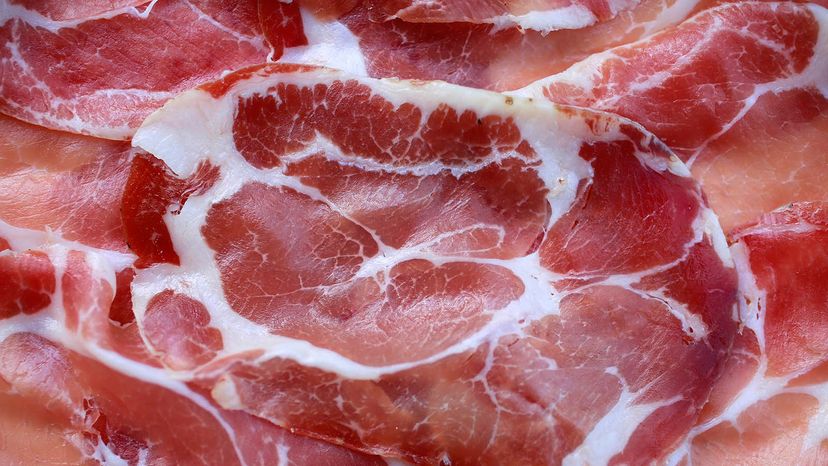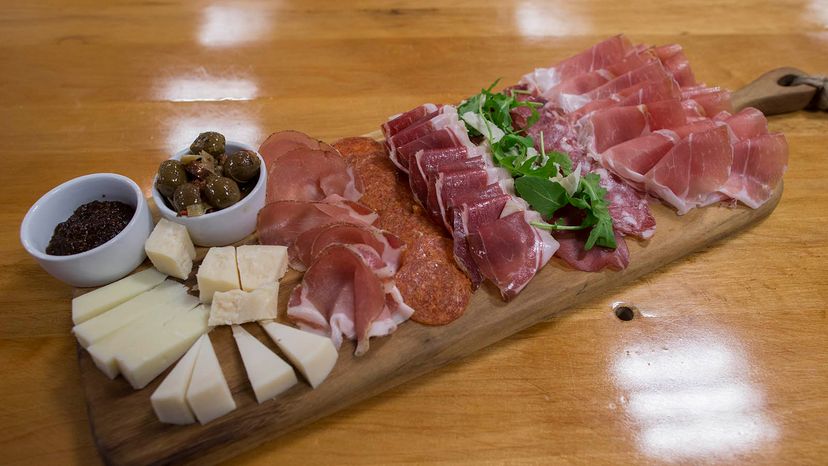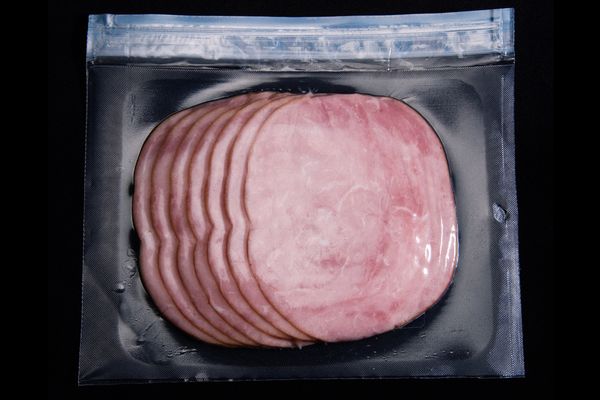
Some of the most popular foods in the U.S. today come from Italy. Think pasta, mozzarella and gelato. The boot-shaped European country is also well-known for its cured meats. But while many Americans are familiar with Italy's prosciutto and pancetta, both of which come from pigs, fewer know much about capicola, another pork product.
Capicola – which is also referred to as capocollo and coppa – is made from pork shoulder. Specifically, the area between the pig's neck and its fourth or fifth rib. The meat in this part of the pig is 30 percent fat and 70 percent lean, a fat ratio that ensures the meat will remain moist and tender after drying. The most prized capicola comes from pigs that are at least eight months old, weigh a minimum of 300 pounds (136 kilograms) and were raised in southern Italy, considered the birthplace of this long-made treat, according to Mashed.com.
Advertisement
It's pretty easy to make capicola. You take some pork shoulder, then add salt and various spices, such as coriander, fennel, cinnamon, nutmeg, cloves or paprika. Some people use red or white wine in the process. In the U.S., it's often made with red pepper or black peppercorns, lending it the nickname "hot capicola." The spices you use all depend upon your taste buds. Or, in Italy, your locale.
In Umbria, a region in central Italy, coriander and fennel are the favorites. In Basilicata, to the south, hot pepper powder is the norm. "I adore the version from Calabria, with chili powder," emails Judy Witts Francini, founder of Divina Cucina, which offers online Italian cooking classes and culinary tours. Calabria is famous for its chili peppers, she says, adding some Italians simply use salt and a Tuscan herb blend of rosemary and sage.
Once you've seasoned the pork shoulder, place the meat in a natural casing, then tie it up and hang it to dry, preferably for about three months.
Like prosciutto, capicola generally comes thinly sliced, and has a similarly delicate, melt-in-your-mouth texture. It also may taste smoky. And even if it's on the spicy side, it will still taste soft and light.
One of the most obvious ways to serve capicola is as part of a charcuterie board. But there is so much more you can do with this versatile meat. For breakfast, you can add it to omelets or breakfast sandwiches. For lunch, it works great in sandwiches and paninis (capicola is one of the ingredients in the muffuletta, by the way, a popular deli sandwich created by Italian immigrants who settled in New Orleans).

At dinnertime, you can use capicola as an appetizer, wrapping it around dates or asparagus spears. And when it comes to entrees, the possibilities are endless. But a few ideas include sprinkling it onto pizzas or pasta, incorporating it into hearty salads or using it to stuff chicken breasts.
Since capicola is rather salty, it pairs well with foods such as cheese, figs, olives, melon, breads and crackers, and full-bodied wine. But some people say to be careful how much capicola you eat. The cured meat has a high fat content and is exceptionally salty. To wit: There are 540 milligrams of sodium in a 1-ounce (28-gram) serving, which is about 25 percent of the FDA's recommended daily intake of less than 2,300 milligrams.
While it's true capicola may not be the healthiest food out there, Francini notes most people aren't eating a lot of it in one sitting. Nor are they eating it daily.
Anxious to try out this Italian delicacy? In the U.S., you may not be able to find it in your local grocery store. Still, you should be able to snag some from your local deli or Italian shop. It's also available online. But if you're having a hard time finding it, you just may have to head to Italy, where capicola is readily available.
Francini also says there's a new trend afoot. Italian butchers are now creating restaurant space in their shops, where they serve up tasting trays of their artisanal products – including, of course, capicola. Mangia!
Advertisement

